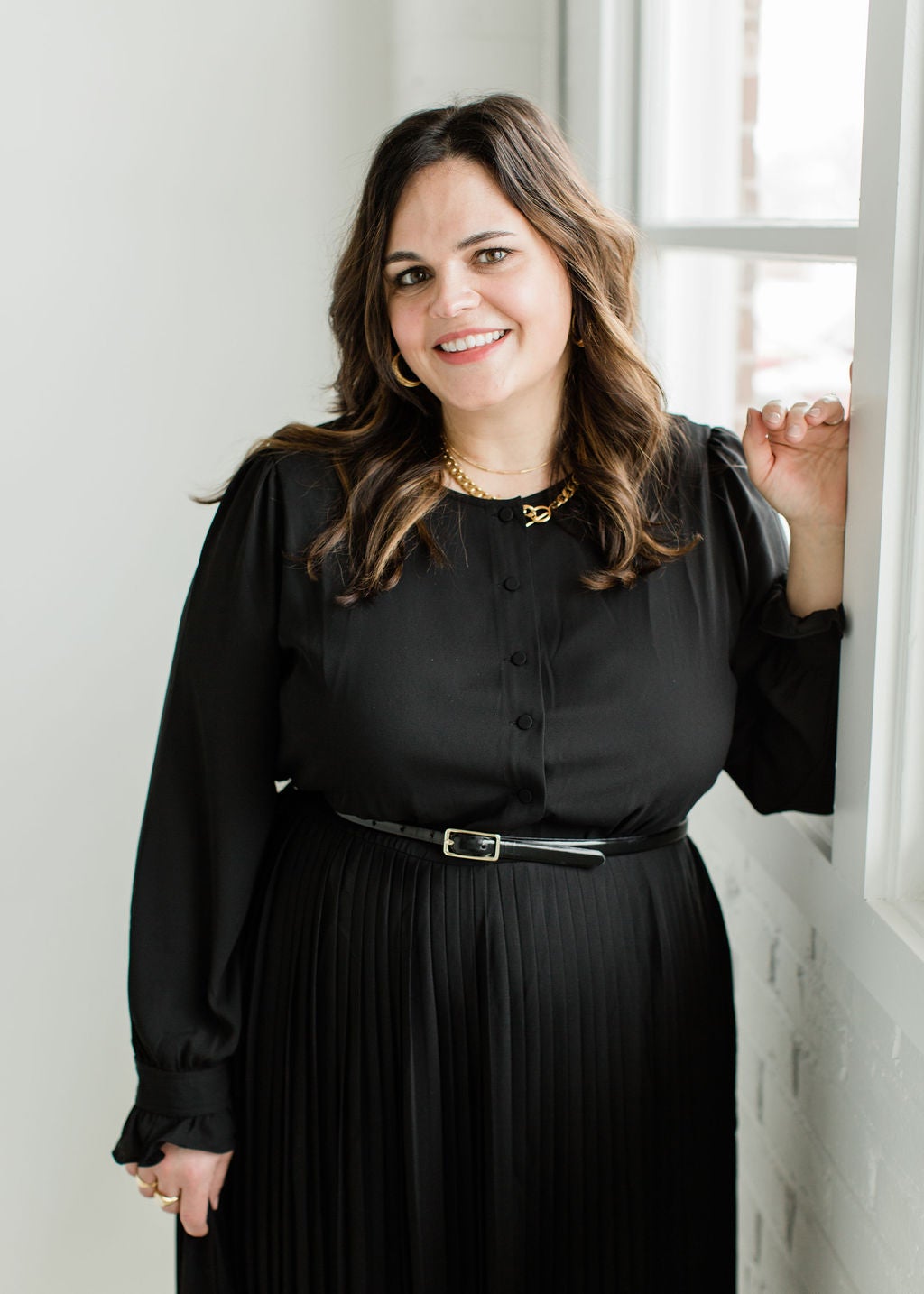The 50 States Project is a yearlong series of candid conversations with interior designers across the country about how they’ve built their businesses. This week, Denver designer Jodi Cook of Cook Design House tells us how she bounced back from her first major business mistake, how being hands-off has helped her firm grow, and how she has mastered the hourly billing model.
When did you know you wanted to be an interior designer?
Oh, I didn’t. I’m a designer by accident. I come from a tiny town in southwest Wisconsin called Lancaster. It’s not too far from Platteville—they had a movie theater there, so that was the big town for us. So, as you can imagine, nobody’s a designer there. When people ordered furniture in my hometown—my mom is still this way—you would go to Ethan Allen and buy a sofa. If you’re building a house, you look at a couple of faucet options the builder’s got.
My grandfather built homes as his trade, and I went to his job sites growing up and always loved the smell of fresh-cut lumber—I still do. So, from an early age, I was around home building, but I never saw that role of designer being played.
When did you realize that being a designer could be a career?
I went to business school at the University of Wisconsin–Madison, and the best way to put it is that I had a quarter-life crisis. I was a marketing and management major, which was so intangible—and it turns out I’m a very literal person. I was like, What is this job? I don’t know what I’m going to be doing when I wake up in the morning and turn on my computer.
When I was a junior, I failed the first exam in finance—I got like a 41 percent, burst out laughing and walked right out of class and into the guidance counselor’s office. I was like, “I can’t do this anymore. I’ve been having doubts, but this seals the deal: I am not a finance person.” The counselor said, “What are these drawing and art history classes that you take each semester?” I told her, “Those are my fun classes so that I can tolerate international business and finance.” She’s like, “Well, your ‘fun’ classes make up the prerequisites for the interior design program. If you just take these three classes this summer, you can apply in the fall.” I was like, “Wait, there’s an interior design program here? And people actually do that for a job?” We talked a little bit about the program and I switched my major.
What did your parents think about that?
My dad was a farmer and my mom was a pharmacist tech. Way after the fact, my mother told me that when I switched my major, she and my dad had a conversation where they were like, “We’re going to have to support her for the rest of her life, because there’s no way she’s going to make any money doing this.”
How did it feel once you got into the design program?
It was immediately easy. I was paddling upstream at business school, and then I switched over to this program where—I mean, not to toot my own horn, but I hardly had to study and it just seemed so intuitive. It definitely felt like I was in the right place. It took me four and a half years to graduate from college, but it was well worth it.
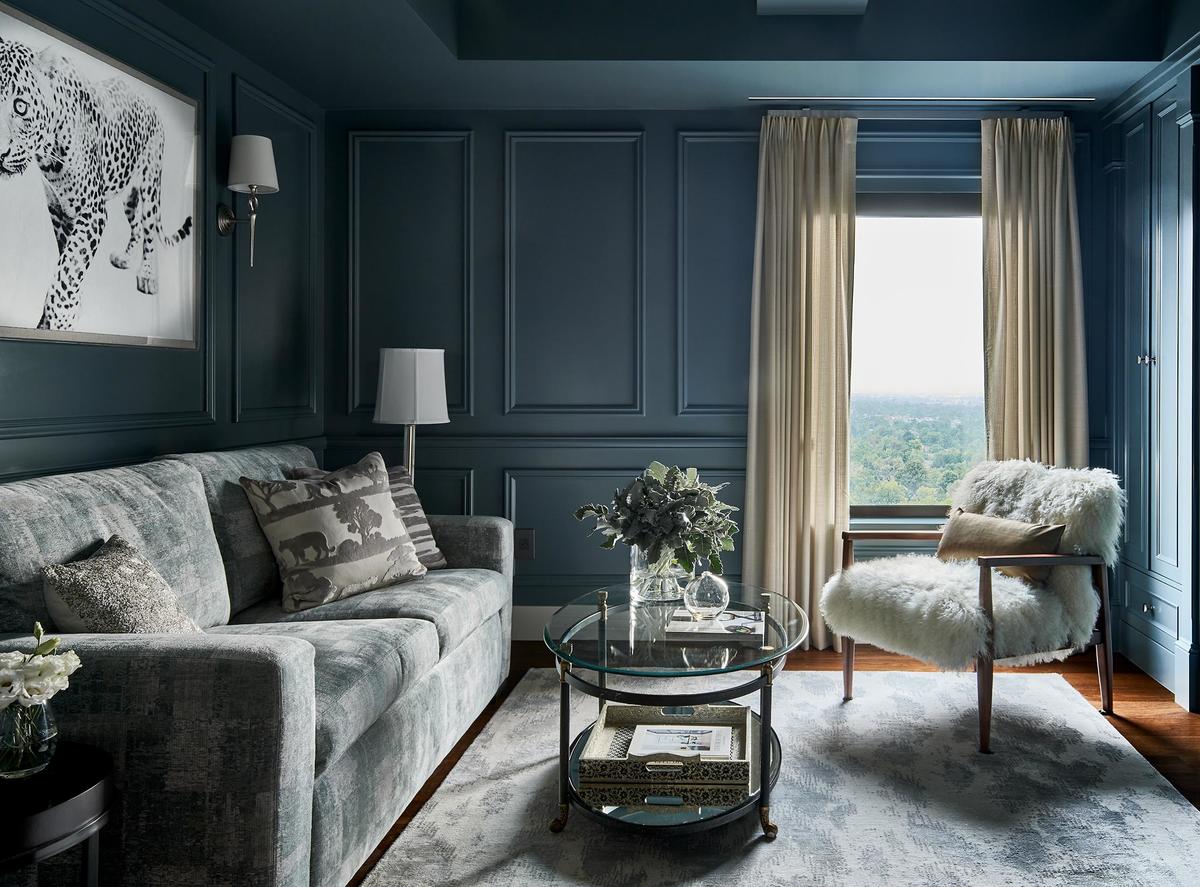
What did you do after graduation?
I moved to Minneapolis in January, right after I graduated, and froze my tail off. By April, I was like, “This is madness, I am out of here.”
I have two uncles out in Boulder, and had done an internship in Colorado before I graduated from school. The woman I interned for had told me, “If you ever want a job, you’ve got a job here.” So, as I was turning into an icicle in Minneapolis, I called her and said, “Were you serious about that?” She said, “Absolutely. How soon can you be here?” So, I packed everything up and moved to Colorado in my ’89 Buick LeSabre. I had a Top Gun soundtrack stuck in the tape deck, the window would not go down—or it would, but then it wouldn’t go back up—and the air conditioning didn’t work. My sweet mother drove out with me—and I got laryngitis right before we left, so I couldn’t even talk.
I moved in with my aunt and uncle at first while I figured out what to do. The plan was to work at that firm for a couple of months while I looked for another job, and at the end of that year, I got hired by Slifer Designs.
The retail store, right?
It is now. But at the time, it was the company in the mountains, and it was a breeding ground for all of the big names in Vail—designers like Courtney St. John, Amy Casey and Andrea Georgopolis are all Slifer alums. It was this behemoth of a design firm, a real powerhouse, and that’s where I cut my teeth. You don’t realize how much you didn’t learn in design school until you get into your first job, and then you’re like, “They taught me nothing. I’ve got to learn everything.” At first, I was a CAD monkey—I dreamt in CAD at that point in my life. I still haven’t ever had a design assistant who’s as proficient in CAD as I am because of my time at Slifer.
I worked under an amazing woman named Kim Toms. She was just a total badass, and she knew everything there was to know about construction, how to manage jobs and what to look for on-site, and she had this really great way of talking with contractors—being insistent about it being done right, but also being polite and approachable. She had her NCIDQ certificate, so it was because of the time I spent working under her that I could then sit for my NCIDQ several years later, which was amazing. I worked with hospitality projects up there—hotels and fractional ownership units—and then they switched me to the residential side when they started going through layoffs in 2008 and 2009 so I could keep my job a little bit longer, but I ended up getting laid off in 2009.
Where did you go next?
My husband and I had gotten married at that point up in Vail. He was a classic case of saying, “I’m going to take a year off of school to ski and figure out what I want to do with my life,” but six years later, he’d never gone back. We moved down to Denver so he could finish school, and I got a job working for a big furniture store that had design services, as well. They eventually got rid of the furniture store and were just offering design services. I was able to manage my own projects working for them; it was 100 percent commission based and it’s hands-down the most money I’ve ever made in my life. It turns out I can sell a lot of furniture in a year.
What was the work like?
I was in charge of my whole project, top to bottom. I had a design assistant who would help, but we’d get half-a-million-dollar furniture orders coming in and we’d be in charge of placing and tracking every order, getting every CFA—we would run the whole kit and caboodle. I did all of my own drawing for it and we wrote our own specifications, so it was a lot. It was very furniture-heavy work, but we did a lot of fixed finishes, too, and a lot of remodels.
It was a great time for me, career-wise. I was able to develop and build a client base, learn about the trades here in Denver, and really get my feet wet. I was there for six years, and in those years, I was published six times, and twice on the cover.
That’s huge!
It was definitely that vote of confidence that you’re looking for at that point in your career—you’re like, “OK, I am good at this after all.”
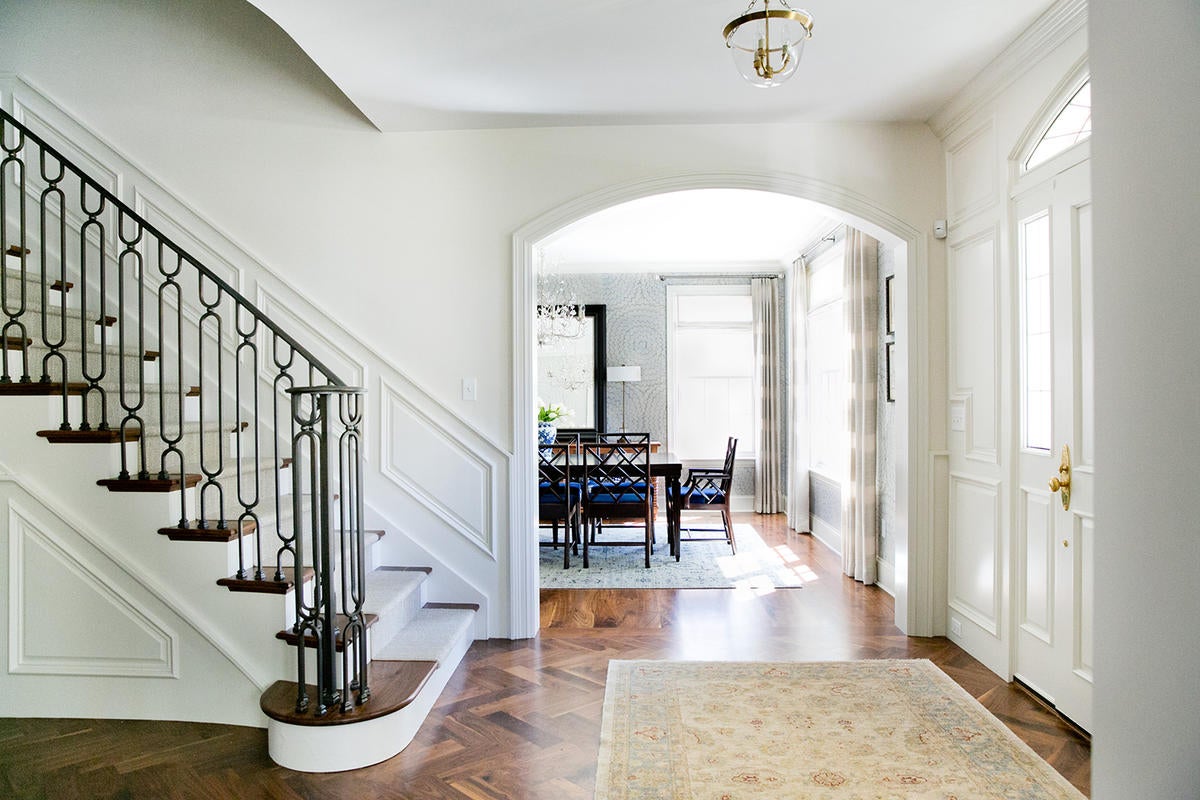
Is that when you decided you wanted to go out on your own?
I never wanted to own my own business. I wanted to work for somebody else—I just wanted to design and let somebody else worry about payroll and bringing the jobs in. But I was in my early 30s at that point and we’d just started having kiddos. I had one child while I was there, and while I was pregnant with my second, I realized that I didn’t see a future for me at the company. But frankly, I didn’t have any other options—I was six months pregnant, so I was kind of like, “Who’s going to hire me?” The short version of what happened next is that we bought a house and moved, and I quit my job and started the business—all in the same month, when I was six months pregnant.
Whoa—that’s a lot!
It was great, because I had a chance to actually enjoy my daughter’s infancy—whereas when my son was born, I was rushing to get back to work so I could keep my job. It wasn’t a great feeling, and I don’t ever want to do that to anybody who works for me. I want them to know that they’re valued and that their job is secure—I mean, I’m a working mom and a lot of the people I work with are working moms, and I want to honor that.
At any rate, it ended up being a leap of faith that worked out really well. I couldn’t tell the clients I was working with at the time that I was going because I had a non-solicitation agreement, but I ended up getting calls from virtually all of them saying, “Where did you go?” because they all had my cell phone. And the majority of them were like, “Can we come with you?” It’s always tough when you leave a company, because you have some loyalty to them, but at the same time, you’re not going to say, “No, client, you can’t come with me.” It was tough.
We talk about that at BOH all the time—how employers and employees navigate that, and how much of that client transfer is client-initiated.
100 percent of mine was—I can say that with my head held high.
That’s really cool. I think it’s sometimes a lot more murky, for better or worse.
It is, honestly. And there’s often bad blood.
So you started with clients—that’s great. How did you get the business up and running?
I found myself out on my own, with a full client roster and a baby, and it was like, “OK, I guess we’re really doing this.” I had no idea what I was doing, but I patched it together. I found a computer guy, bought some computers and downloaded CAD. I knew Design Manager because I’d been using it for over a decade, so bought a subscription to that. I did a business plan, but it always felt like I was writing a wish list that was imaginary. You just kind of piece it together and figure out what you need to do.
I made huge mistakes, too—I mean, huge mistakes. Taxes, let’s talk about taxes. I had no idea that I was supposed to be paying estimated taxes. I had hired a CPA who was not specific to interior design, and that was a mistake, because I think they underestimated what I was going to do in revenue and didn’t have me pay estimated tax payments, or the ones that they did have me paying were a fraction of what I ended up owing.
Oh, no. So that first year ...
I got nailed with taxes to the point that I couldn’t pay it in full and had to go on a payment plan. I got rid of my office space and had to let go of my design assistant, which broke my heart because she had been with me for ages and was a dear friend of mine. And I sat for the next year, paying off my taxes and licking my wounds. I basically went into survival mode. I had a great first year, which was amazing—but it also sucked because I had to spend the second year paying for my great first year that I didn’t even know I was screwing up. If I had to give one piece of advice to anybody starting out, it’s hire a bookkeeper or CPA who knows design.
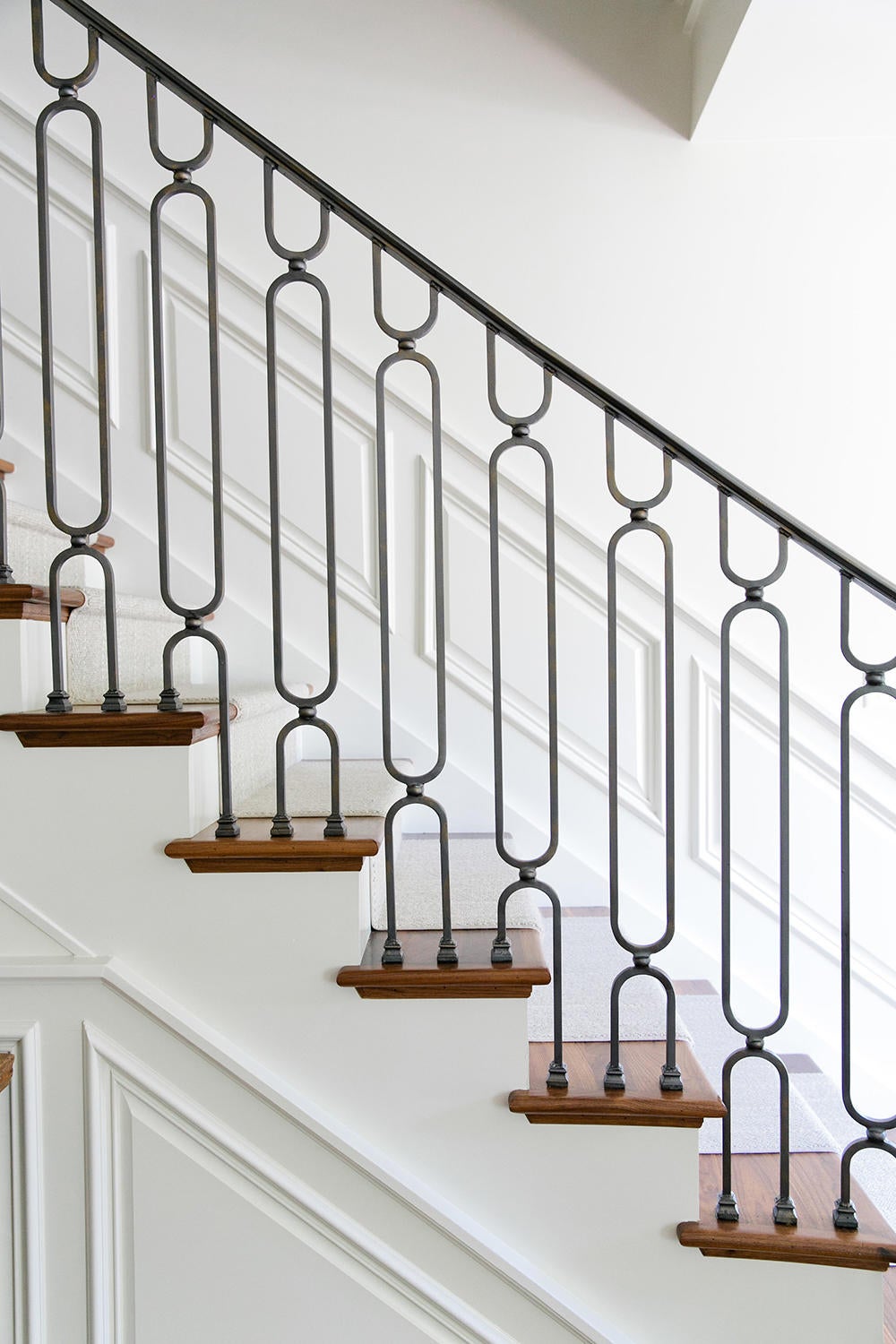
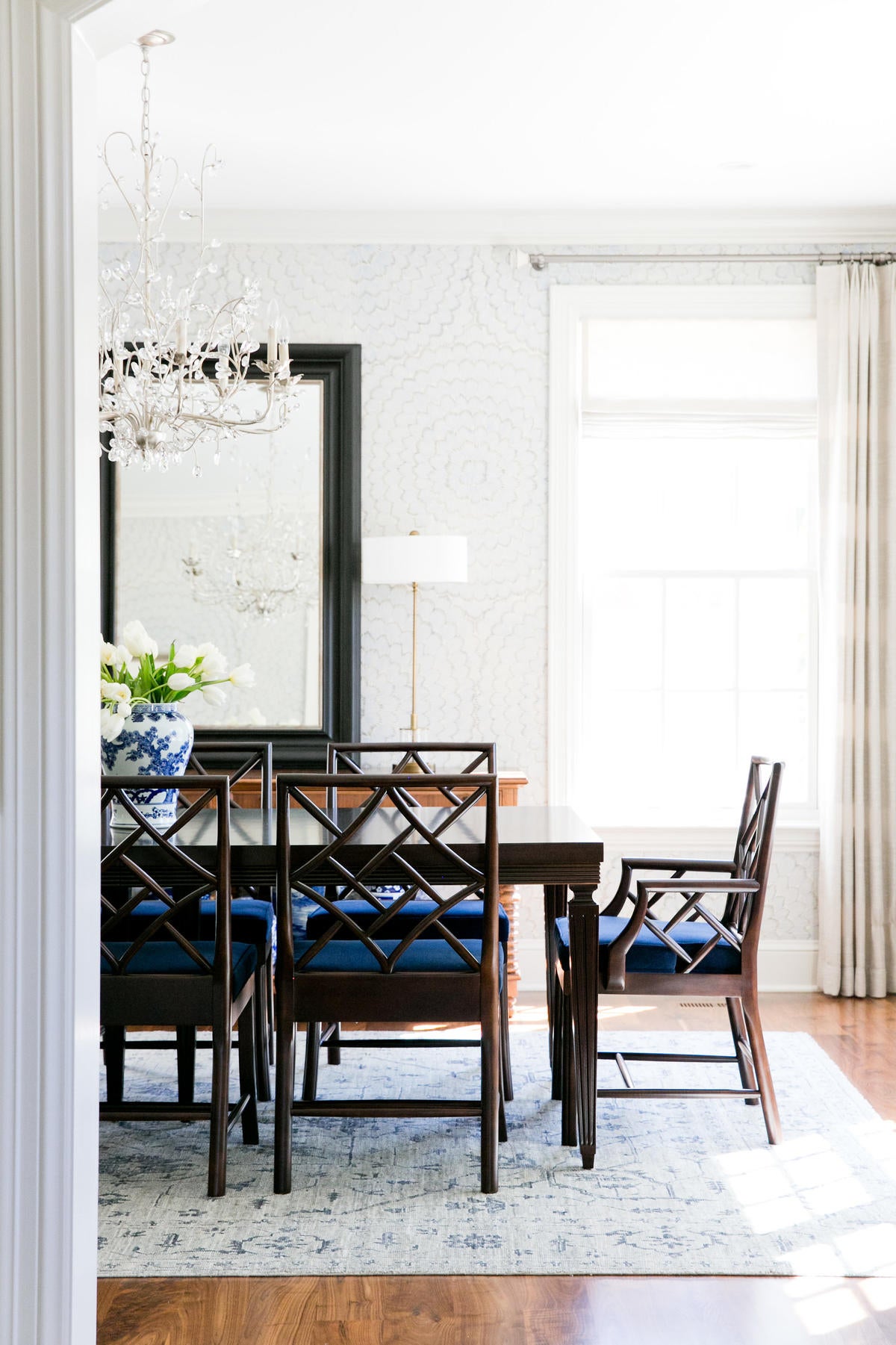
Fast-forward to today: How many projects are you typically working on at a time?
Right now, we have four new construction projects, seven fairly large-scale remodels, three smaller-scale remodels and three non-construction or finishings-only jobs—like, wallpaper or painting and changing light fixtures, but nothing major. So when I add that up, that’s 17 projects.
How hands-on are you with each?
Very hands-off with a lot of them. I decide which projects we say yes or no to—I want to be the one to assess whether or not they’re a good fit. But, then, I have two senior designers who take on their own projects. One just started with me at the beginning of January, but she’s actually a friend of mine from design school, so I’ve known her for 20 years. When you hire somebody, you can usually assess their skill level, but it’s so hard to assess who they are as a person; taking that unknown out of it made it a no-brainer—I already know who she is and what’s she’s all about, and I know she’ll be a good value fit for our company. The other senior designer has been with me for over a year now.
How do you decide what you say yes to?
I always tell clients that I want to talk about the trifecta: the scope of work, budget and timeline. Can I do what you want, for the price you want, in the time frame you want? And if I can’t, then I know that we’re not going to have a successful relationship. If I can, then great, let’s talk about what we can do to work together.
It’s all about setting expectations from the beginning. If somebody’s like, “I want to remodel my kitchen for $50,000,” I’m going to tell them I’m not going to be able to meet their needs, and try to refer them to somebody who might. That’s just not what we do. In my mind, kitchens start at $120,000—they’re just expensive. I’m sure there’s a way to do it cheaper, but I don’t know what that is, and I don’t have the interest in doing that.
So where do clients see you throughout the project?
I still take on a lot of the projects myself, because I haven’t quite phased out of doing that yet, but I’m moving toward telling clients that their main point of contact will be one of our senior designers and that once they sign on, that designer will be the person they’re talking to throughout the process. I’m still copied on all of the emails going back and forth, so that I know what’s going on. I know what stage the project’s in, or if there’s scope creep happening, things like that. But the day-to-day client meetings and presenting things falls to the seniors.
We have touch points at each phase where I’m checking in—redlining drawings, looking at schematics. Good design doesn’t happen in a vacuum. [But] sometimes it’s just me looking through everything and saying, “This looks great. I would never have thought to do that, you’re amazing, and thank you for all of your hard work.”
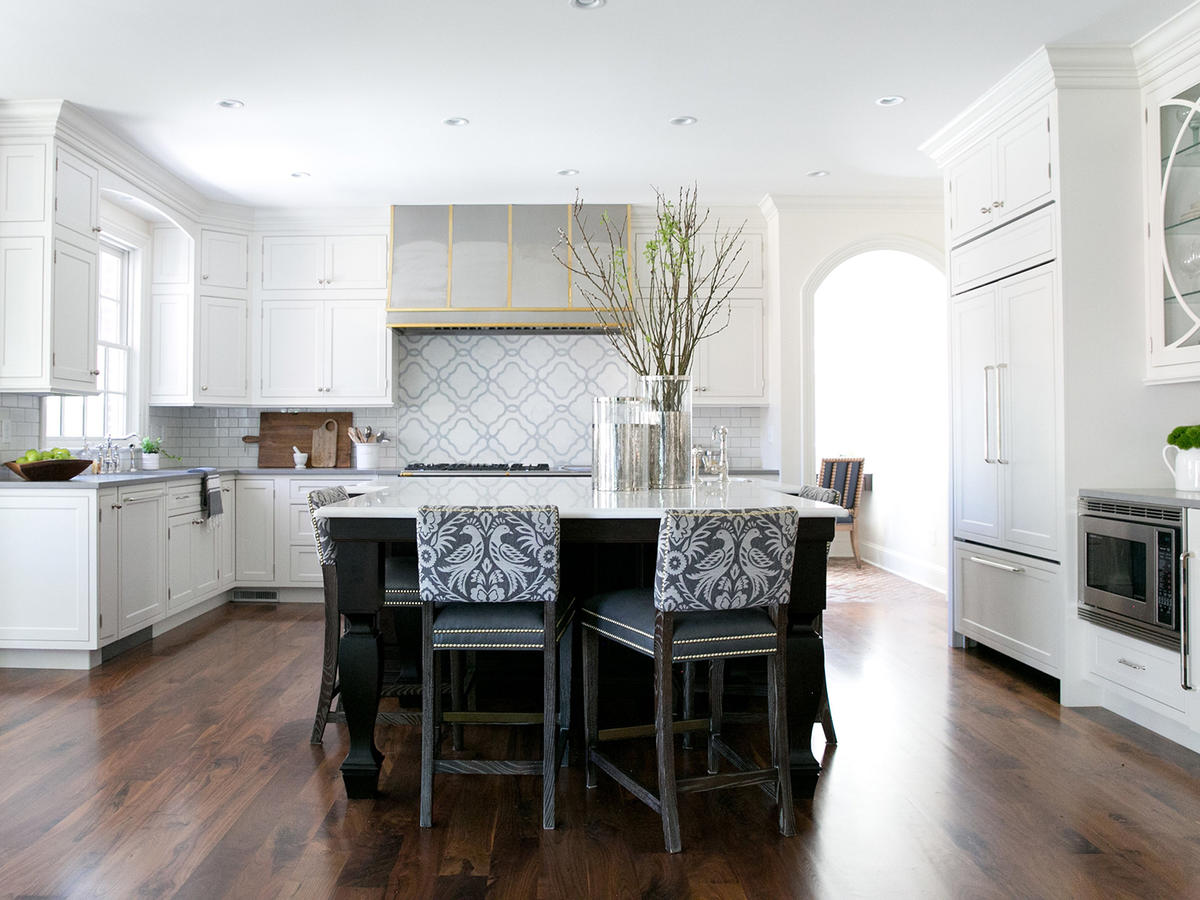
You’re checking in with the senior designer, but does the client see you at those points?
No. I always know what’s going on, they see that I’m copied on all the emails, but the client really doesn’t hear from me at all except when I send monthly invoices. This works great for new clients, because they don’t know me from Adam—they just know what our website looks like, or they were referred from somebody they trust. But I have a lot of referrals that are personal, direct referrals from former or existing clients—that’s why I say that I will always have projects to manage. Of the 17 projects, 10 of them are repeat clients, which is pretty amazing.
And they want you.
They want me. There have been a couple of those where I’ve been able to involve my seniors behind the scenes to keep everybody moving forward. But the fact is, if I were to pass their job off to somebody else, they would be insulted and probably wouldn’t come back. So I have to stay client-facing for the clients who are repeat clients, former clients or if a great client from earlier says, “My sister is going to call you,” I’m not going to pass that person off. But all new client inquiries go to the seniors.
In doing that, I know I’m running the risk of them doing exactly what we were talking about before—they could go out on their own and take half my clients with them. But here’s the thing: That’s OK. Everybody has the right to own their own business. There’s no need to protect what you’ve got so desperately that you’re choking it out. I think there has to be that self-confidence in what you’ve built—and if those six clients or eight clients thought so much of the work that they did with my senior designer, they should go with her. There’ll be more clients to come. We got them somehow, right?
I admire that attitude. I’m not sure every designer feels that way, though!
I guess I just have a little bit of a laissez-faire attitude about that. But I know a lot of my friends in the industry meet with every client and have people who work behind the scenes who may never even meet the clients. For me, that’s how you stay small. Not that I want to get huge, I want to stay boutique, but if I want to take on more projects, I’ve got to release my grasp on things a little bit. I can’t be everything.
What does the rest of your support team look like?
Right now, it’s me and two senior designers. In the past calendar year, I’ve passed off all of our purchasing, receiving and procurement to [interior design accounting and project management firm] Stemper & Associates, who happen to be local here in Denver. Outsourcing that part of the business has been such a weight off my shoulders.
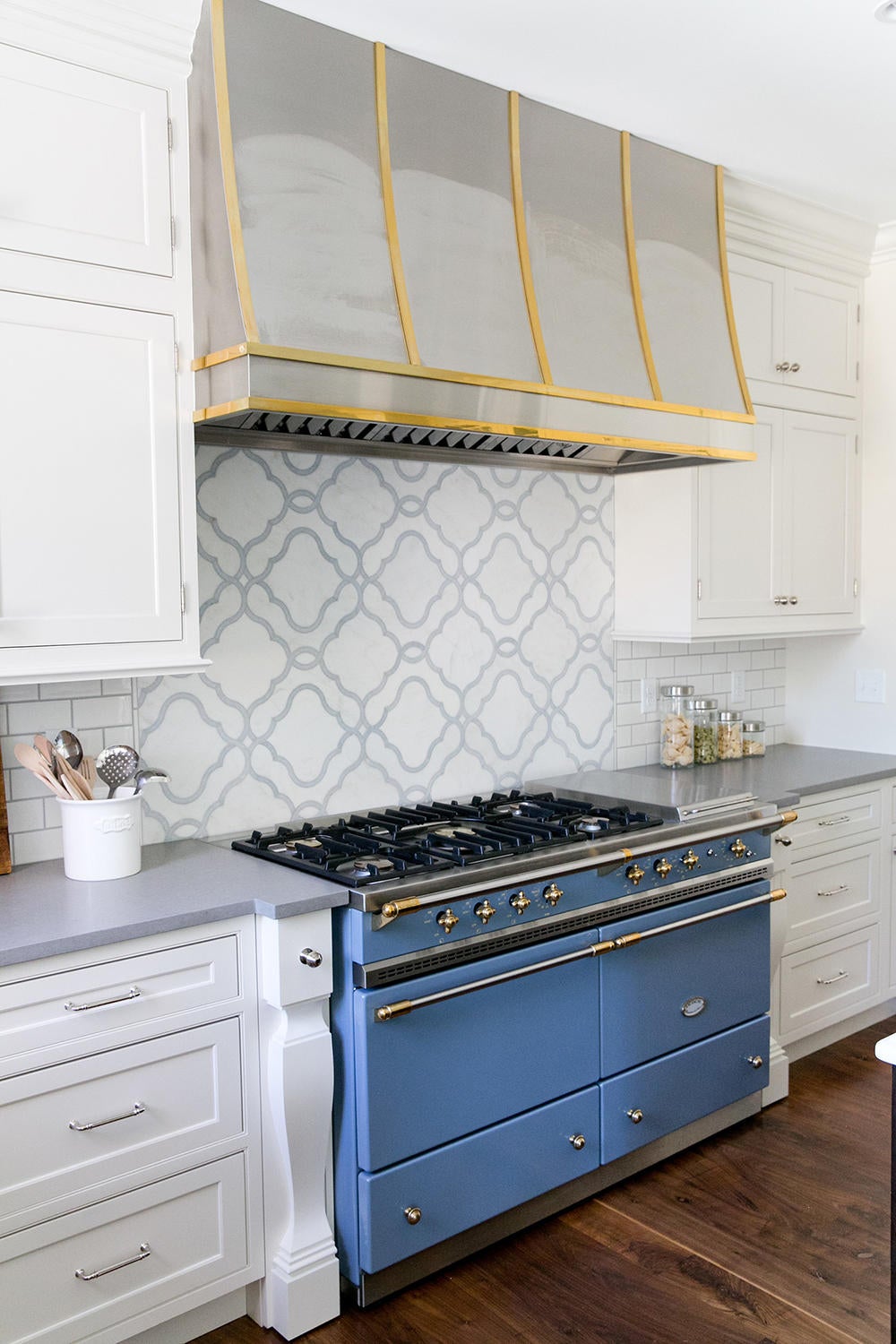
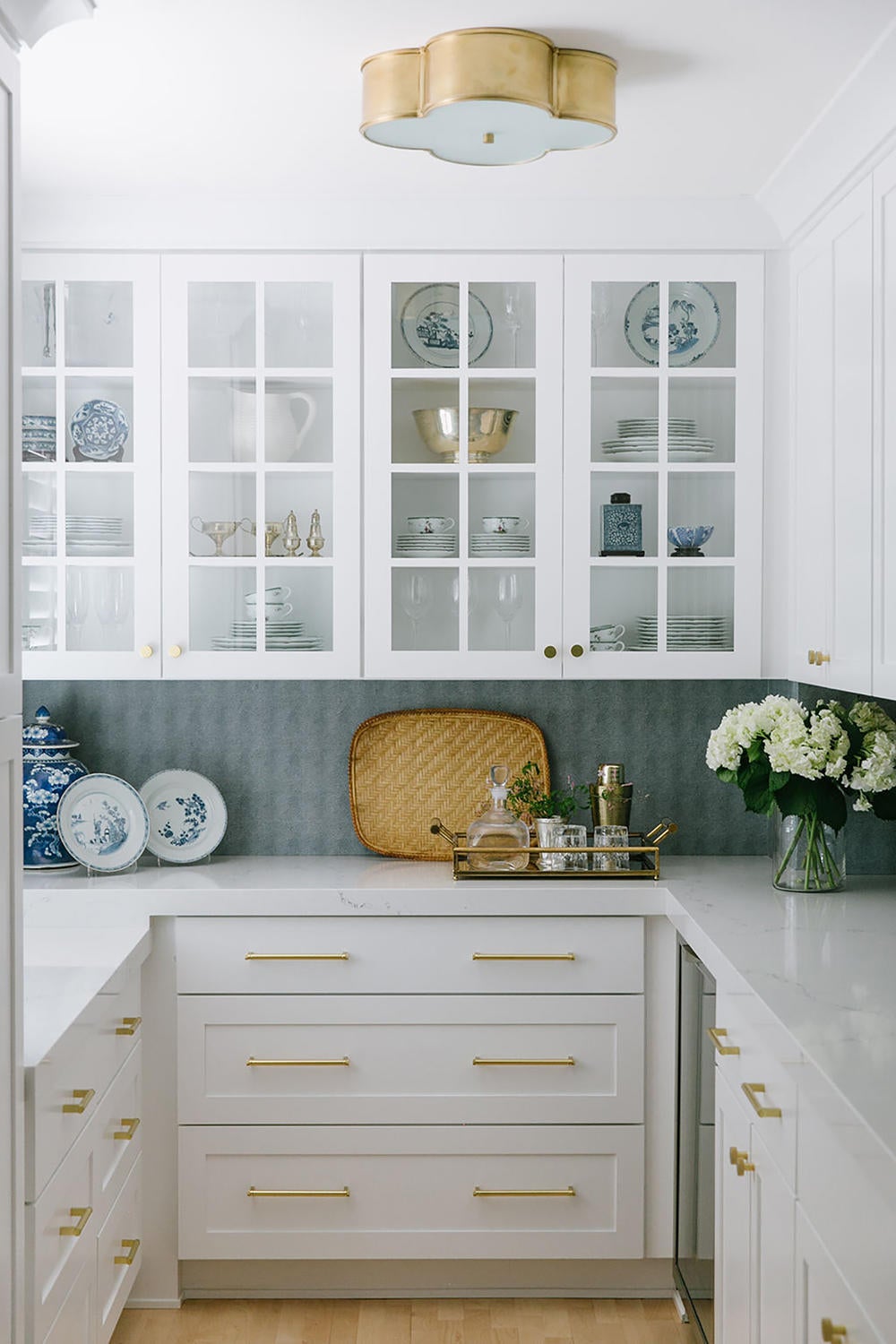
You’ve been working with a business coach for the past few years. How has that shaped your view on the firm’s growth?
I work with Gail Doby, who has a coaching and consulting firm, and her business partner Erin Weir. They’re both here in Denver. Gail was a designer, so she understands [the industry]—but what they’re looking for, too, is the big picture of where you want to go with your life. It’s not just with your business, but: When do you want to retire, and are you planning to buy another home? What are your dreams for your life and how can we help you accomplish that financially? I like that they dig in a little bit deeper and take a holistic approach to your life, not just your business.
What it’s done for me is give me that sounding board—and make me think about what my ideal client actually looks like. What do you want to have for the company—a staff of five or 15 or 50? What’s the endgame, and how do we get you from point A to point B? They were the ones who were like, “You can’t be the point person for every project, because there’s just not enough time in a day.”
I thought my first hire would be a junior designer, because I was thinking I needed somebody to work under me. But [my coach] was like, “No, you need somebody to take over projects. You’re putting a Band-Aid on it if you hire a junior designer, but you’re actually solving part of the problem if you hire a senior.” After I hired Ashley, the senior designer, I said that my next hire would be a junior designer, and [my coach was] like, “No—depending on how much work you have coming in, your next hire is either another senior designer or a business manager.”
How did you decide to hire a second designer this year?
I was planning to hire a business manager right before COVID hit, and then I quickly pulled down the ad in March. When things picked up so much after everything opened back up last fall, my coach was like, “With the pipeline you’ve got, you need another senior designer.” So that’s what I did. Now she’s told me that I can hire a business manager whenever I’m ready, but I’m just not ready yet. It’s such a huge salary—[payroll and human resources management software] ADP already takes all my money! I’m taking baby steps and being conservative, but it’s been blowing up this year. We’ve been getting six new client inquiries a week since the start of the year.
You just can’t say yes to all of that.
Oh, God no, and I don’t. You have to try to pick the ones you want to work on and go from there.
I feel like letting go can be nerve-wracking. Was it hard to check out from the process and know that a project was happening without you?
It was the easiest thing in the world, actually—and that is because I hired the right person and I have the most amazing team. I don’t have a big team, but the people who are here are in the right seat. I think I interviewed 20 people before I hired Ashley, and none of them felt quite right, so I wasn’t pulling the trigger. As soon as I told myself, “You need to make a decision by this Friday, here are your candidates”—as soon as I did that, she dropped into my lap. She really is an absolute dream. I think that taking the time to let the right person find you is imperative. A lot of other designers in my coaching group will hire within a week, and I don’t understand how they do it! I want to take my time. I’d rather not hire than hire the wrong person.

How do you approach billing?
What I’ve noticed is that there are the fixed-fee people and the hourly people. Those of us who are hourly are convinced that we’re doing it right, and those who are fixed are convinced they’re doing it right. I don’t think there’s a right or wrong answer, but hourly works for me and my clients, and that’s how I bill. I bill for everything up until the point that they make a payment on a furniture proposal, and then I switch to a markup on the product we order, which covers us from procurement into installation. And then clients pay the receiving, storage, delivery and installation fees separately.
How do clients react to the idea of paying hourly?
They usually want a sense of what it is going to cost—they’ll say, “Are we talking $5,000 or $50,000 in design fees?” I’ve gotten pretty good at guessing. I give them a big range and I just say, “I pulled my last three projects that were a similar scope of work and they were in the range of $15,000 to $25,000, so yours will probably fall somewhere in there when all is said and done—but I’m not guaranteeing that in any way.” I put lots of big disclaimers and caveats on it.
Are there challenges to that hourly model, or is it a comfortable fit?
It’s a comfortable fit for me. I know that my contemporaries who are business coaching pupils who do fixed fee, they say part of the reason they went to that [model] is that they got so much pushback about their hourly invoices. I don’t get that. I want to knock on wood right now, because I don’t know if I’m just lucky or if there’s something I’m doing to communicate that maybe they weren’t. But every month we send an itemized invoice, and I’ve never gotten any pushback from clients. I mean, maybe occasionally, but it’s usually from clients who are unhappy about something else to begin with.
What are you doing to communicate what those fees represent?
When I send out invoices, they’re coming from me. I’m saying, “Hello Mr. and Mrs. Client, please see our hourly invoice for the month of December and let me know if you have any questions.” I explain that design is frontloaded, and in the first couple months of the project you’re going to get some big design bills and then it tapers off. So I remind them of that in the email with their invoice—I’ll say, “We’re in the heart of the design right now, which means we’re selecting all of the product that you’re actually going to put in your house. You’re going to have some more big bills in the coming months as we get into construction documents, and then it’s going to taper off to just a couple of hours here and there for construction administration.”
So you’re not just explaining the individual hours, you’re making sure they know where they are in the timeline of the project.
I talk to new clients about the phases of design and how schematic design, design development, and construction documents are heavy, heavy design work—they’re going to be getting big bills from me and then it’ll taper off. So I don’t know if it’s because I had warned them about that or, I don’t know, maybe I’m just lucky and we have great clients.


How do most new clients find you?
We get a lot of word-of-mouth referrals. I’ve done no advertising. I mean, I always say that and then my business coaches are like, “Jodi, you’re always marketing, you just don’t know you’re marketing.” She’s joked that my superpower is that I’m always marketing without realizing it.
What’s the secret to that?
I like people. I like to talk to people, and I genuinely like most people. So when I find a contractor I like working with, sometimes I’ll just be driving and I’ll think of him and I’ll be like, “Gosh, I wonder what he’s up to?” and I’ll pick up the phone and call him. I’m not looking for work, I just want to say hey, see how things are going, and see if his daughter got into Texas A&M, because that’s where she wanted to go. I’m just actually, genuinely interested in them, and that always ends up developing that relationship. He’ll call me back, and he might say, “Hey, while I’ve got you on the phone, I have a job that I was wondering if we needed to get a designer involved in.” I also back that up with having a team that produces great drawing sets and that clients like working with. The clients end up thanking the contractors—saying, “Thank you so much for bringing this person in, because they’ve made my life a lot easier.” So it’s all relationships, I think.
It’s like that with existing clients, too. My business coach will be like, “What’d you do for marketing this week?” I’m like, “Oh, nothing. It was a busy week, and I ended up having lunch with two former clients.” And she’s like, “That is marketing, Jodi.” Really? Because I actually just miss seeing them. I like my clients—most of them I genuinely miss after the projects are done. So I think that it’s just developing the relationship, thinking about people, going, “Oh, man, they were having a hard time, I’m going to send some flowers.” Sometimes clients wait a long time to work with us, so we try to send little gifts—chocolates with a note that says, “Good things come to those who wait,” or “The sweetest relationships take time,” something like that. Right now, I’m asking people to wait until April to work with us—and they’re doing it, which is amazing.
So after all these years, it turns out you were a natural at the kind of marketing you needed.
I guess so! But I’ve done no formal advertising as far as taking out print ads or promoted Instagram ads or anything like that.
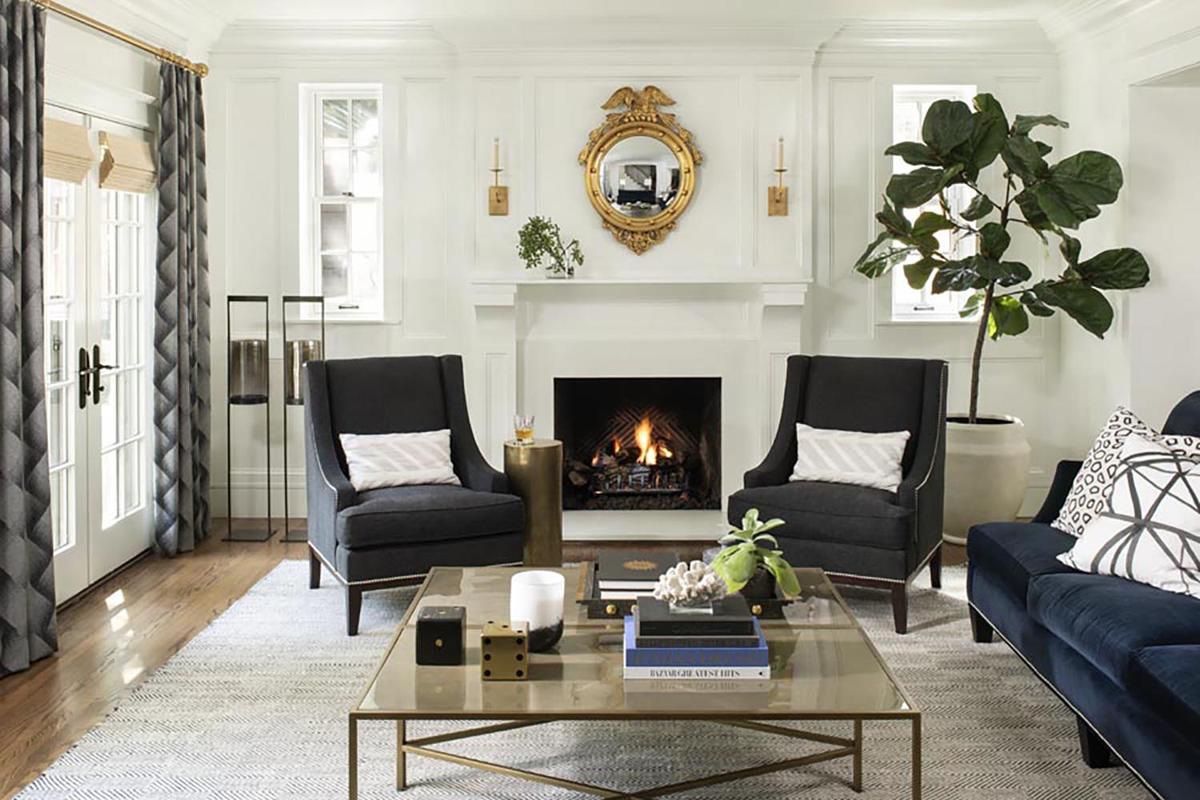
Has Instagram been super important in building your firm?
Doesn’t that feel like the million-dollar question? I know some designers who get business virtually exclusively from Instagram right now. And granted, I’ve got like 4,000 followers, and they have 70,000 or 80,000. But for me, Instagram is more of an extension of our portfolio. That’s how I see it. One thing I feel very strongly about is only posting your own work. Or if you’re going to post somebody else’s work, you have to mention them in the first line, so it doesn’t get cut off.
Yes. You are speaking my language right now.
I think there’s a lot of deceit—maybe it’s not intentional, but sometimes I think it’s a little shady. I see designers who have a lot of Instagram followers that are very guilty of not posting their own work. Some post predominantly other people’s work but bury the credit in the hashtags—you have to go looking for it to find out whose work it is; it’s not really clear. And tagging them in the image does not count! You have to credit them in the subject to make it clear to the person who’s reading that it’s not your work. Otherwise, you’re gaining clients off of somebody else’s labor. Anyway, I’m going to step down off my soapbox now, but I feel very strongly about that.
No, it’s important. I hate it, too.
It feels like a violation of intellectual property. I understand why people do it—sometimes it’s genuinely, “I am crushing on this image.” But make it a Story, then—don’t put it as part of your feed, because your feed is your portfolio.
I would say of every six inquiries, one found us on Instagram. But for us, most leads are word of mouth. It’s, “Oh, my contractor recommended you.” Or our cabinet guy—they’ll say, “We went to ask them to make cabinets and they said that we should call you.” Or, “I drove by this house and saw your sign out front,” that kind of thing. But your website has to be good for that to work, because people see your sign and then they go to your website—if your website’s total crap, it doesn’t really help you out any. We did a rebranding of our logo and our website last year at about this time.
Did you work with an outside agency for that?
We worked with Honor Creative in Nashville, and they were amazing. I thought they were very organized, very disciplined, great with deliverables—they were great.
When you were redoing the site, how did you want it to communicate your firm’s values?
I wanted it to feel classic and timeless, approachable and stylish. A lot of people look to their designer to be their style maven. I can’t say that without laughing, because it seems kind of ridiculous—I mean, I do not think of myself as a “style maven.” I think that you have to at least communicate, “We’ve got style and we can pull a look together.” But I still wanted to be approachable. A lot of designers will do the mean face in their photo, but I wanted big smiles.
One of our value words for the company is welcoming. I think it’s really important to be authentically yourself and be approachable, and you end up attracting the right people—the people who you want to attract, because they’re looking for somebody like you.
What about the work you chose to highlight?
The images on our website—clients will say, “Oh, everything looks beautiful, but we have kids and they’re just going to ruin everything.” And I’m like, “Actually, pull up this project, because they have three children under the age of four. That’s an indoor-outdoor fabric, and those stools are in vinyl.”
That must be so reassuring.
We also talk through how we pull together their house in a way that’s going to function for their family. That’s the first thing we do when we sign on the job—I want to know who’s using the space and what special needs they might have. Is there a down allergy? Do they keep kosher? I need to know if there’s anybody who’s in a wheelchair, or if they’re going to have their mother-in-law living them at some point. I want to know so we can tailor-make the spaces for them. Sometimes I’ll be like, “Are you planning to get a dog anytime soon? Because I’m not going to let you buy that rug if you’re getting a dog—wait to get the rug after the puppy’s trained.”
What’s the most personal question you ask a client?
We get real personal. In the primary bathroom when we’re picking a tub, I’ll ask, “Do you guys ever bathe together?” It’s the most awkward question, but it’s like, I’m not trying to be a creeper, I just need to know what kind of tub to get, or where to put the tub filler. I’ll put it on the end if it’s only ever going to be one person, but otherwise someone’s going to be whacking their head on it—it’s a logistical thing. I know that’s an embarrassing question, but I’ve got to know.
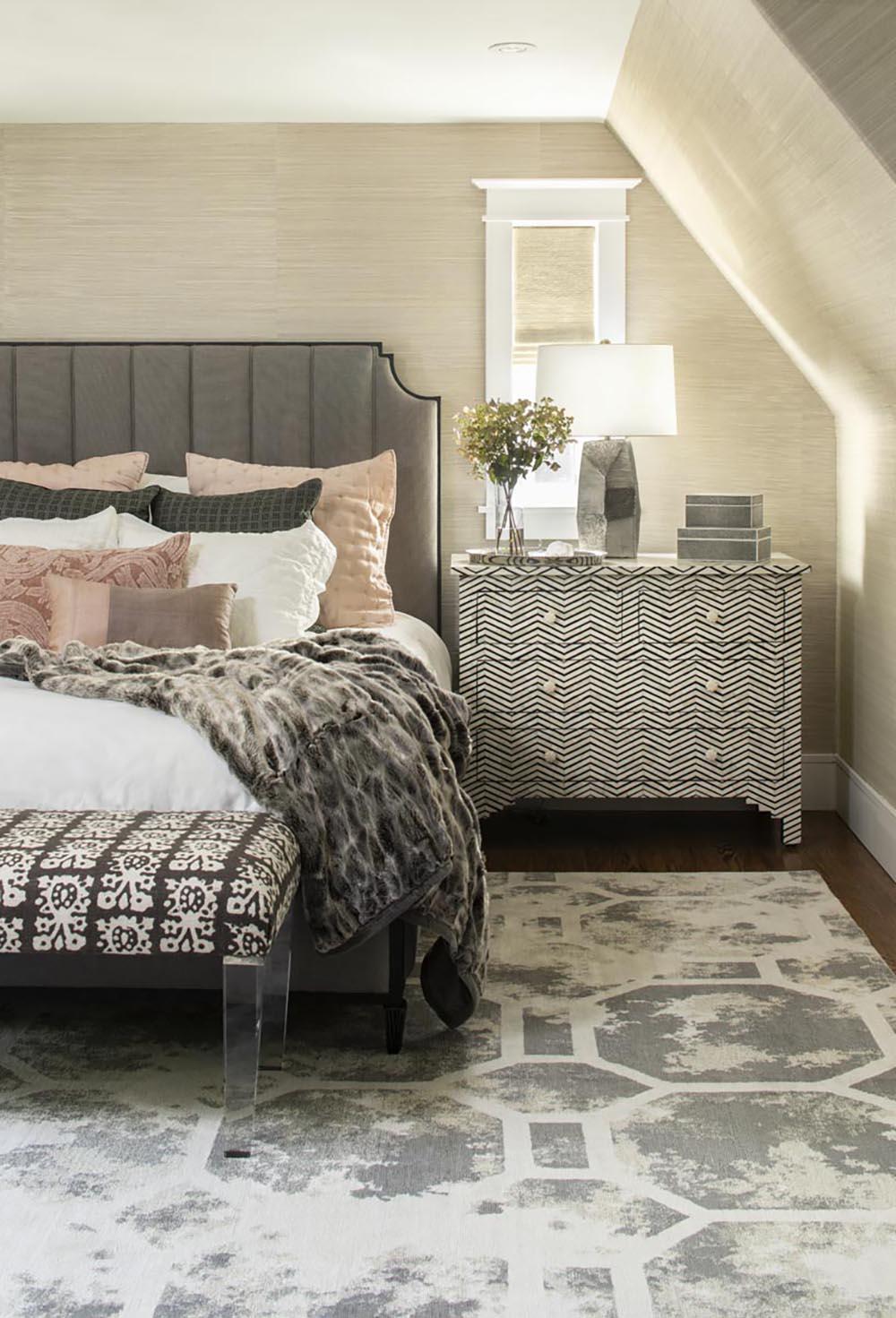
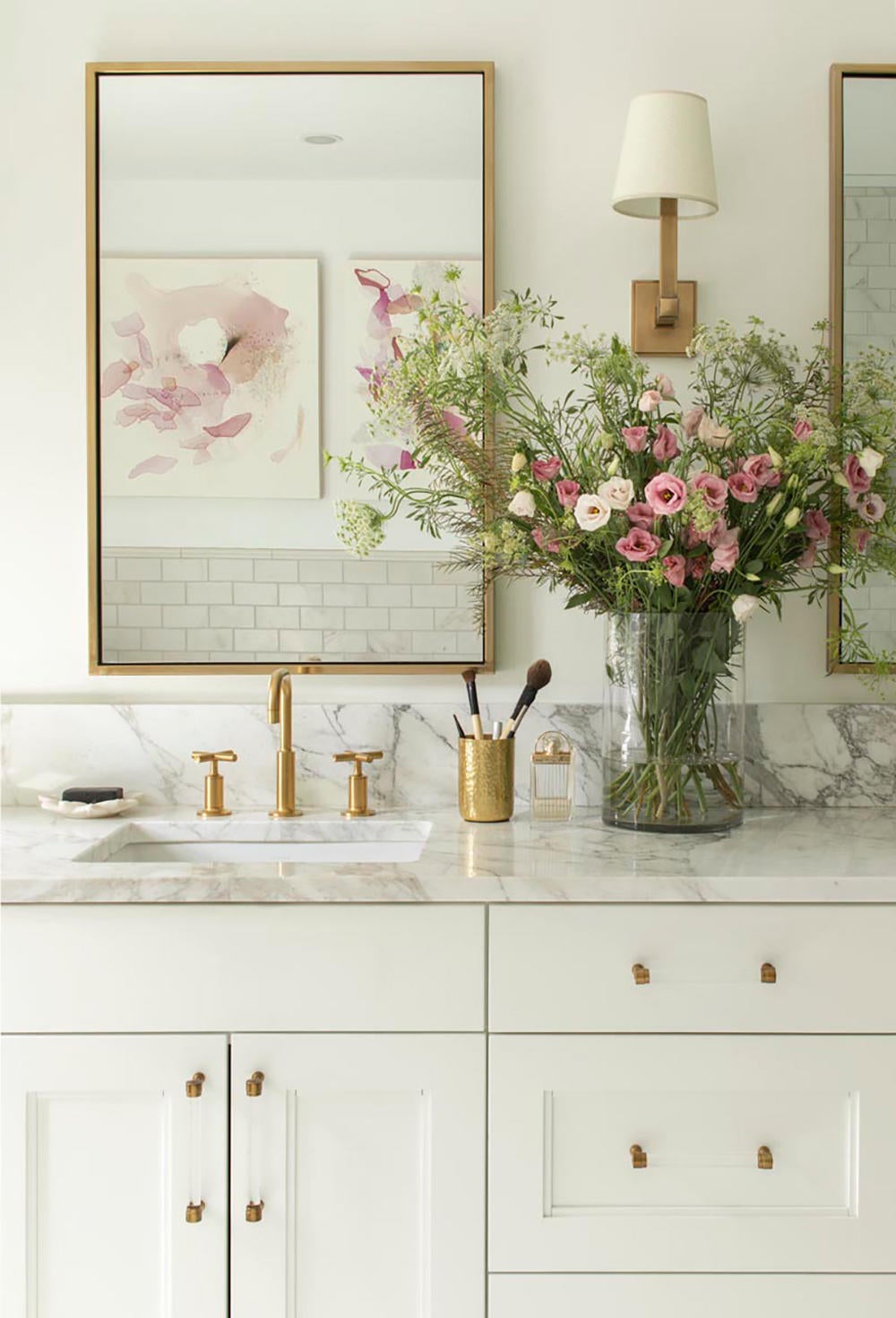
Can you tell me a little bit about what’s happening in the Denver design scene right now?
The housing market’s going gangbusters. It just seems like everybody is moving here. I mean, Denver’s beautiful—the weather’s great, it’s sunny more often here than it is in San Diego, and it’s a great place to be. It’s a little bit of a cow town that’s come around in the sense that you can go to the nicest restaurant in Vail in a pair of blue jeans and not be out of place. It’s very casual here, and the way you entertain is more casual, too.
We have a lot of new construction projects right now, but also a lot of remodels, because real estate is so expensive. You can buy a $500,000 dump, tear it down and then spend another $2 million, or you can buy the $2.5 million house that’s already been done, that’s maybe not quite your style. The smallest project I’ve worked on was a 2,000-square-foot penthouse, and the largest is a 23,000-square-foot house that sold for $13 million. Some of the smaller projects that we take on, the home values are a little less than $2 million, and then as far as new construction or a remodel, that’s really kind of the starting point—you’re hard-pressed to build a home for under $2 million here, I think.
What is the biggest thing you wish you knew from the start when you launched the firm?
I wish I knew to hire a bookkeeper and a CPA who knew the design industry, because that was my biggest financial mistake. What happened with the taxes—I regret it intensely, because I feel like it set me back. And then waiting so long to hire a business coach and getting somebody to look at my books—it was unsettling at first, kind of like letting somebody look in your underwear drawer. It’s like, “Oh, gosh, you’re really looking at all of it, I’ve got to show you everything.” But then it’s so freeing, because you’re like, “OK, I don’t have any secrets from you. I’ve got nothing to hide, and you’re really here to help me.” It gave me room to ask, “Am I paying myself too much? Am I not paying myself enough? Do I not make enough? Are my markups not high enough?” All the things you were insecure about, you realize you’re actually doing fine, or they’re going to tell you how to fix it.
Were there things you changed as a result of that coaching relationship?
They had me button up a couple of things that I was leaving a little too loosey-goosey in my contract. They also gave me permission to charge more, to raise my rates. I felt guilty about it, and they said to me, “How long have you been going to your hairstylist?” Ten years. “How many times have they raised her rates on you?” Fair point, right? So I raised my rates twice, actually, in the past two years since then.
To learn more about Jodi Cook, visit her website or find her on Instagram.
Homepage image: Jodi Cook | McKenzie Coyle















